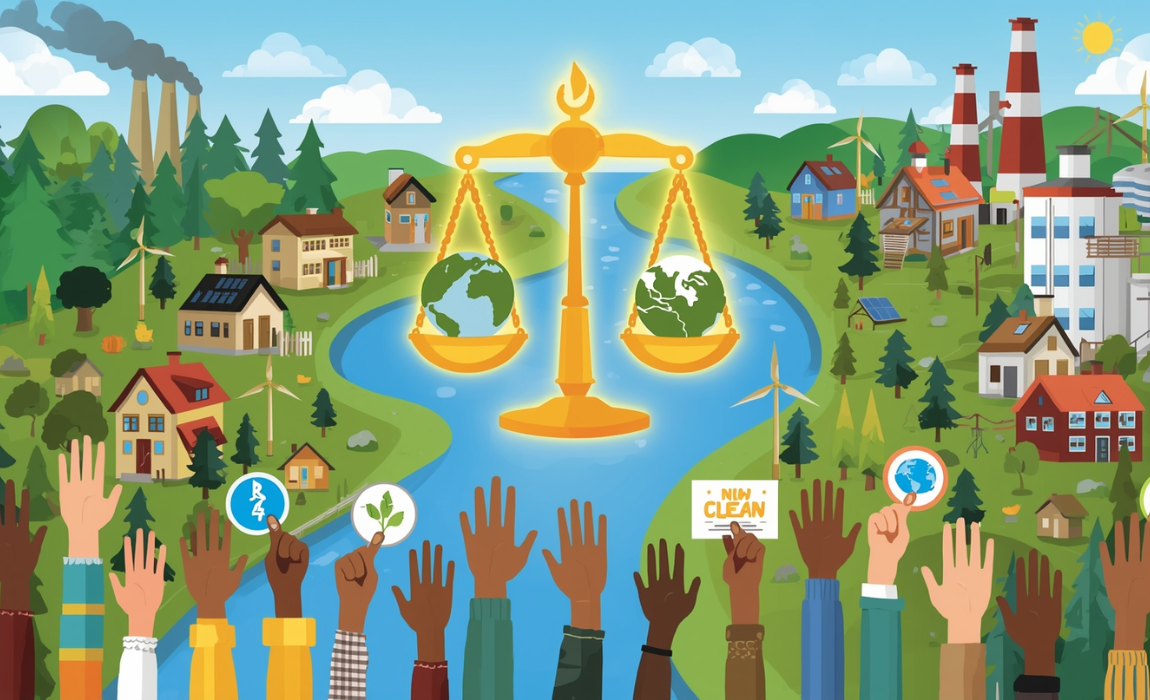
"Environmental Justice and Human Rights: A Critical Analysis"
Environmental justice is no longer about saving trees or rivers alone; it is about securing the fundamental human right to life, health, and dignity in an unequal world.
The climate crisis is no longer a distant threat; it is a lived reality. Heatwaves scorch Europe, wildfires devastate North America, floods ravage Pakistan, and air pollution chokes New Delhi. These are not just environmental tragedies; they are human rights violations in slow motion. When polluted air denies children the right to breathe, when rising seas displace coastal communities, or when toxic industries poison groundwater, the promise of human dignity enshrined in constitutions and international charters lies broken.
The intersection of environmental justice and human rights has become one of the defining moral and legal frontiers of our age. It forces us to confront an uncomfortable truth: environmental harm is rarely distributed equally. The poor, marginalized, and indigenous communities bear the heaviest burden, while the powerful often remain insulated.
From Stockholm to Paris: A Legal Evolution
The recognition of this link has grown steadily over decades. The 1972 Stockholm Declaration was the first to proclaim that humans have a right to an environment of quality. The Rio Declaration (1992) went further, linking sustainable development with equity. Today, international law increasingly accepts that a healthy environment is a precondition for the enjoyment of all human rights.
This momentum culminated in a landmark moment in 2022, when the United Nations General Assembly recognized the human right to a clean, healthy, and sustainable environment. Though not legally binding, the resolution provides moral and political weight to litigation and activism across the world.
Courts as Green Crusaders
In many countries, courts have stepped into the breach. The Supreme Court of India, in Subhash Kumar v. State of Bihar (1991), held that the right to life under Article 21 includes the right to a pollution-free environment. More recently, the Court invoked Article 21 again to declare the right to be free from the adverse effects of climate change.
Elsewhere, the Dutch Supreme Court in Urgenda Foundation v. The Netherlands (2019) compelled the government to adopt more ambitious climate action, recognizing that failure to act violated citizens’ human rights. In Pakistan, the Lahore High Court ordered climate adaptation measures, citing the fundamental rights of future generations. These cases show how judicial activism is reshaping environmental law into a rights-based framework.
Contemporary Flashpoints
The struggle for environmental justice is visible in ongoing conflicts:
• Adivasi and tribal communities in India resisting mining projects that threaten forests and livelihoods.
• Small Island States, like Tuvalu and the Maldives, fighting at the UN for survival as rising seas threaten their very existence.
• Youth climate activists worldwide, from Greta Thunberg in Europe to Fridays for Future in the Global South, reframing climate inaction as intergenerational injustice.
These battles underline that environmental harm is not only ecological but deeply social, economic, and political.
Challenges Ahead
Yet, the road ahead is fraught with contradictions. Development imperatives often clash with ecological limits. Governments invoke economic growth to justify industrial projects, while communities demand environmental accountability. The fossil fuel industry continues to wield disproportionate influence, even as climate science warns of tipping points.
At the legal level, enforcement remains patchy. International climate agreements lack binding enforcement mechanisms. Domestic courts, while innovative, often struggle to implement their orders against entrenched political and corporate interests.
Conclusion: A Justice Beyond Borders
Environmental justice and human rights cannot be pursued in silos. They must be seen as intertwined guarantees of human survival. The struggle is not merely about protecting nature, but about ensuring equity, dignity, and fairness in who pays the price of ecological harm and who enjoys the benefits of progress.
If the 20th century was about defining civil and political rights, the 21st must be about securing environmental rights as human rights. The question is not whether humanity can afford this shift—it is whether we can survive without it.
The planet has made its plea clear. It is time the law listened.
